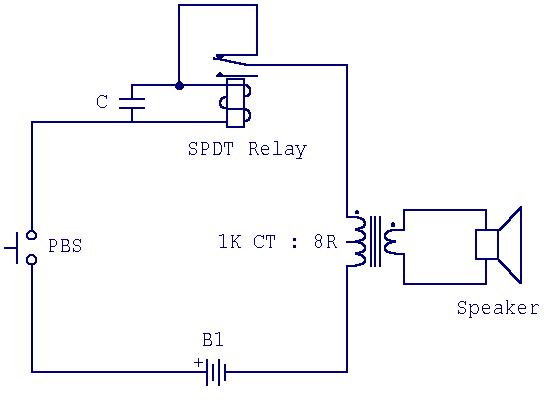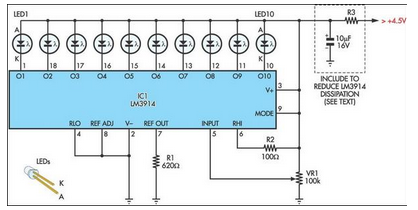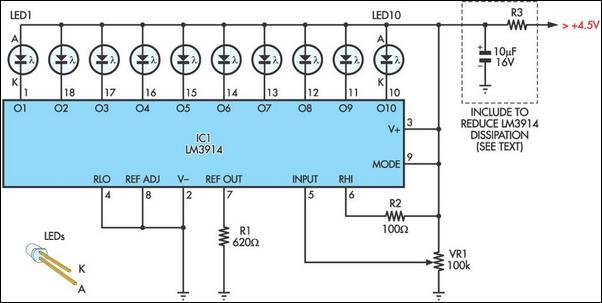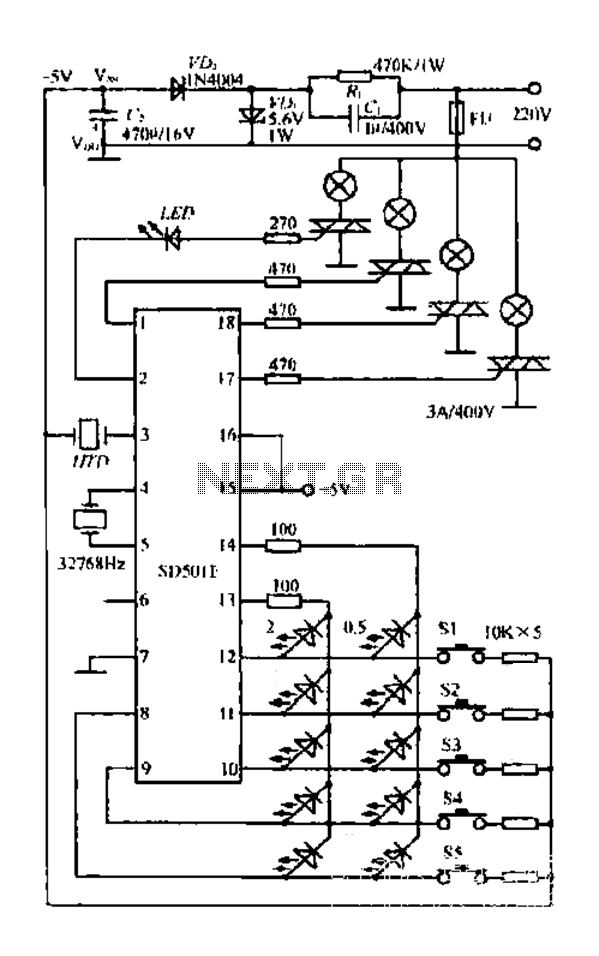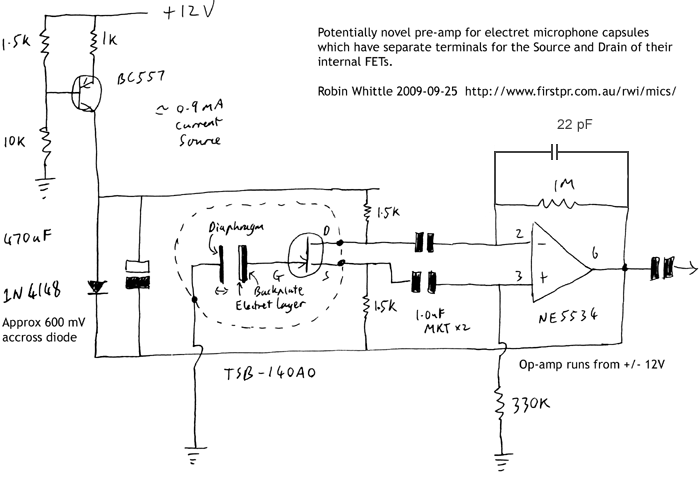
Novel BuzzerCircuit
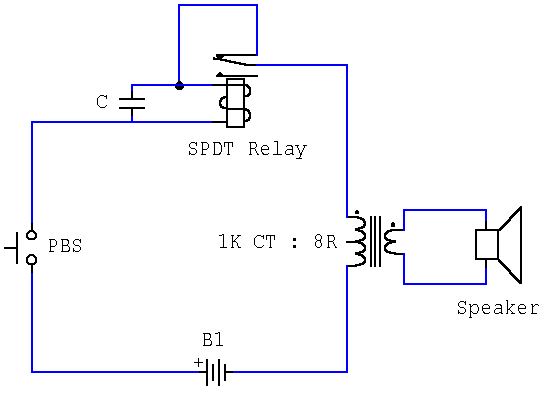
This innovative buzzer circuit incorporates a relay connected in series with a small audio transformer and a speaker. When the switch is activated, the relay is energized through the primary winding of the transformer and the closed relay contact. Once the relay is energized, the normally closed contact opens, cutting off power to the relay. This action causes the relay contacts to close again, creating a rapid oscillation that repeats in quick succession. The speed of this cycle generates fluctuations in the primary winding of the transformer, which in turn affects the secondary winding. Consequently, the tone produced by the speaker is directly related to the frequency at which the relay operates. A capacitor, designated as C, can be employed to "tune" the output note, with a nominal value of 0.001 µF; increasing the capacitance results in a lower tone from the buzzer.
The described buzzer circuit is a classic example of a relay oscillator, where the relay acts as the switching element that controls the audio output. The circuit's operation begins when the switch is pressed, allowing current to flow through the primary winding of the audio transformer. This induces a magnetic field, which activates the relay. The relay's contacts then switch states, leading to a rapid on-off cycle.
The interaction between the relay and the transformer is crucial for generating sound. The transformer amplifies the current fluctuations, translating them into audible sound waves through the speaker. The frequency of the oscillation, and thus the tone of the sound produced, is determined by the relay's switching speed. The capacitor plays a pivotal role in this process; it acts as a filter that shapes the frequency response of the circuit. By adjusting the capacitance, the user can fine-tune the buzzer's output tone to achieve the desired sound characteristics.
In practical applications, this type of buzzer circuit can serve various functions, such as alarms, notifications, or signaling devices in electronic systems. The compact design, utilizing a relay and transformer, makes it suitable for integration into a wide range of electronic projects, providing a simple yet effective means of audio output.This novel buzzer circuit uses a relay in series with a small audio transformer and speaker. When the switch is pressed, the relay will operate via the transformer primary and closed relay contact. As soon as the relay operates the normally closed contact will open, removing power from the relay, the contacts close and the sequence repeats, all ve
ry quickly. so fast that the pulse of current causes fluctuations in the transformer primary, and hence secondary. The speakers tone is thus proportional to relay operating frequency. The capacitor C can be used to "tune" the note. The nominal value is 0. 001uF, increasing capacitance lowers the buzzers tone. 🔗 External reference
The described buzzer circuit is a classic example of a relay oscillator, where the relay acts as the switching element that controls the audio output. The circuit's operation begins when the switch is pressed, allowing current to flow through the primary winding of the audio transformer. This induces a magnetic field, which activates the relay. The relay's contacts then switch states, leading to a rapid on-off cycle.
The interaction between the relay and the transformer is crucial for generating sound. The transformer amplifies the current fluctuations, translating them into audible sound waves through the speaker. The frequency of the oscillation, and thus the tone of the sound produced, is determined by the relay's switching speed. The capacitor plays a pivotal role in this process; it acts as a filter that shapes the frequency response of the circuit. By adjusting the capacitance, the user can fine-tune the buzzer's output tone to achieve the desired sound characteristics.
In practical applications, this type of buzzer circuit can serve various functions, such as alarms, notifications, or signaling devices in electronic systems. The compact design, utilizing a relay and transformer, makes it suitable for integration into a wide range of electronic projects, providing a simple yet effective means of audio output.This novel buzzer circuit uses a relay in series with a small audio transformer and speaker. When the switch is pressed, the relay will operate via the transformer primary and closed relay contact. As soon as the relay operates the normally closed contact will open, removing power from the relay, the contacts close and the sequence repeats, all ve
ry quickly. so fast that the pulse of current causes fluctuations in the transformer primary, and hence secondary. The speakers tone is thus proportional to relay operating frequency. The capacitor C can be used to "tune" the note. The nominal value is 0. 001uF, increasing capacitance lowers the buzzers tone. 🔗 External reference
Warning: include(partials/cookie-banner.php): Failed to open stream: Permission denied in /var/www/html/nextgr/view-circuit.php on line 713
Warning: include(): Failed opening 'partials/cookie-banner.php' for inclusion (include_path='.:/usr/share/php') in /var/www/html/nextgr/view-circuit.php on line 713
